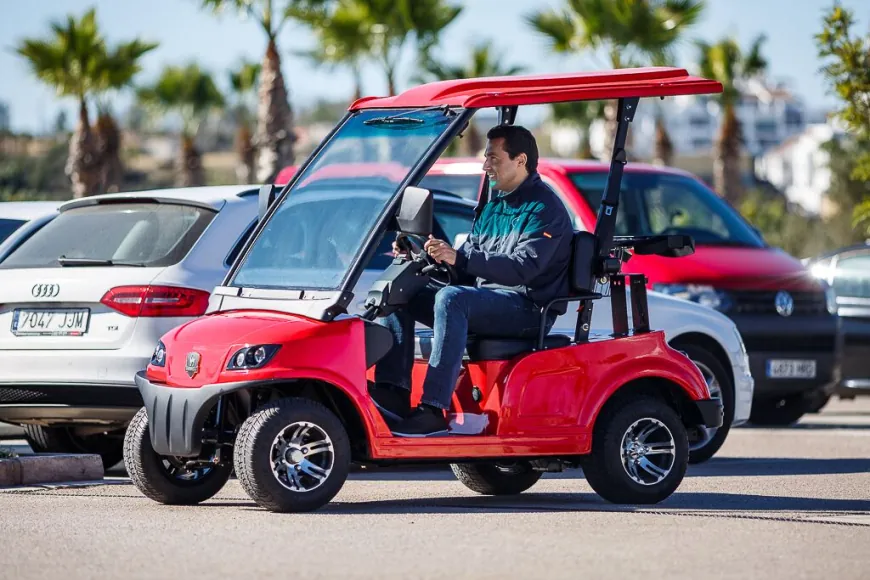Growing Demand for Efficient Urban Mobility to Propel Growth of the Low Speed Vehicle Market
The Global low speed vehicle market is estimated to be valued at US$ 11.01 Bn in 2024 and is expected to exhibit a CAGR of 8.6% over the forecast period 2024 to 2031.

The low speed vehicle market is estimated to witness high growth owing to rapid urbanization and need for last-mile connectivity solutions. Low speed vehicles are electric vehicles with maximum speed of 25 miles per hour and are designed for transporting people or small payloads within urban environments. These vehicles provide economical and eco-friendly urban mobility options compared to conventional alternatives. Some benefits of low speed vehicles include low maintenance costs, zero direct emissions, and efficient operation for routine short-distance commutes within cities. The growing need for intra-city transportation with a smaller footprint is propelling the demand for low speed vehicles.
The Global low speed vehicle market is estimated to be valued at US$ 11.01 Bn in 2024 and is expected to exhibit a CAGR of 8.6% over the forecast period 2024 to 2031.
Key Takeaways
Key players operating in the Low Speed Vehicle Market Companies are American Custom Golf Cars, Inc., Club Car, E-Z-GO, Garia, Gem Car, Green Power Motor Company Inc., Harley-Davidson, Inc., Ingersoll Rand, LSV Inc., Polaris Industries Inc., Star EV, StreetScooter GmbH, Tennant Company, Toyota Motor Corporation, and Yamaha Golf-Car Company.
The market offers growth opportunities through increasing sales in emerging economies and focus on developing electric and hybrid LSVs. Technological advancements are focused on enhanced battery technology, development of autonomous LSVs, and connectivity solutions for fleet management.
Market drivers
The growing demand for urban mobility and last-mile connectivity solutions is expected to be a major market driver. Rapid population growth and urbanization are increasing intra-city commutes, propelling the demand for economical micro-mobility options. Stringent emission regulations regarding fuel-based vehicles and initiatives encouraging electric vehicles adoption will also contribute to the market growth. Investments in developing charging infrastructure and promotion of shared mobility business models will further boost the LSV market over the forecast period.
Current challenges in Low Speed Vehicle Market
The Low Speed Vehicle Market Growth is facing several challenges currently due to the ongoing economic uncertainties caused by the COVID-19 pandemic and supply chain disruptions across the globe. The demand for LSV's saw a dip in 2020 and 2021 period due to decreased discretionary spending and restricted movement during lockdowns. Another major challenge is the availability of spare parts and breakdown in service and repair infrastructure for LSV's in some regions. High maintenance and replacement costs also act as deterrents for certain customer segments. Safety regulations around LSV's vary across countries which poses compliance issues for manufacturers having global supply networks and customer base.
SWOT Analysis
Strength: Growing acceptance of LSV's for last mile connectivity and cargo applications in cities/campuses. Advanced battery technologies increasing driving range and payload capacity of electric LSV's.
Weakness: Limited speed capabilities restrict inter-city travel. Higher upfront costs compared to conventional vehicles.
Opportunity: Favorable government policies and incentives promoting electric mobility. Untapped rural markets in developing countries can drive volumes.
Threats: Entry of new EV startups may disrupt established business models. Stringent emission norms can render few existing powertrain technologies obsolete.
North America accounts for the largest share in the low speed vehicle market currently, both in terms of volume and value. Presence of large fleet operators, growing urbanization and awareness about newer mobility solutions support the demand. Asia Pacific is expected to grow at the fastest pace during the forecast period with China and India emerging as high potential markets. Increasing clarion calls for last mile connectivity across cities, townships and industrial parks will favor uptake of LSV's for commuting as well as logistics applications. Europe is mature from an adoption standpoint led by Germany, UK, France, Italy and Spain while RoW regions including Latin America and Middle-East & Africa offer scope for penetration of appropriate LSV formats suited for local needs.
The United States and Canada together form the largest geographical region for the low speed vehicle market currently in terms of value. This is attributed to higher vehicle ownership and preference for personal mobility over public transportation in these countries. The regional market is estimated to be worth over US$ 5 Bn in 2024. China is anticipated to emerge as the fastest growing country globally during the forecast period from 2024-2031 with a projected CAGR of over 12%. This can be accredited to massive infrastructure development activities, growing e-commerce sector and policy support for electric shared mobility in China.
Get more insights on Low Speed Vehicle Market
Discover the Report for More Insights, Tailored to Your Language
French | German | Italian | Russian | Japanese | Chinese | Korean | Portuguese
About Author:
Money Singh is a seasoned content writer with over four years of experience in the market research sector. Her expertise spans various industries, including food and beverages, biotechnology, chemical and materials, defense and aerospace, consumer goods, etc. (https://www.linkedin.com/in/money-singh-590844163)












